-
Posts
2,406 -
Joined
-
Last visited
Content Type
Profiles
Forums
Gallery
Events
Articles
Posts posted by Ian
-
-
I've been trying to get hold of one of these for over a decade now. Finally one came up on a European auction at a reasonable price and at a time when I could squeeze my budget. I'll be living on sawdust for some time to come though....
This coin circa 197 - 165 bc. Apollo laureate obverse with statue of Apollo Gryneus reverse holding lustral branch and phiale. Omphalos and amphora at his feet. MYPINAIOI in left field alongside monogram
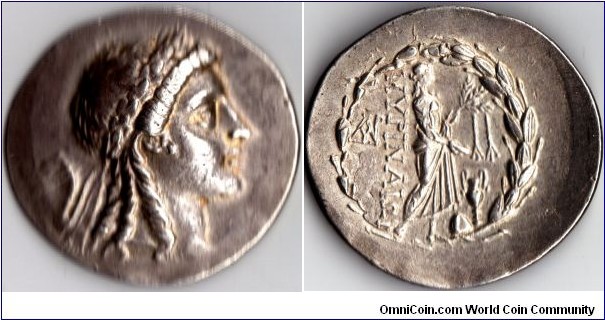
-
I've had a quick look through my collection with the following results:
I've got three different Nurenberg types and two different jeton types issued under Paparel but struck in France
First the Nurenberg ones:
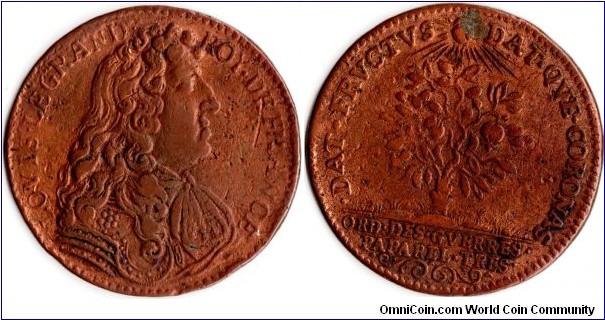
unsigned
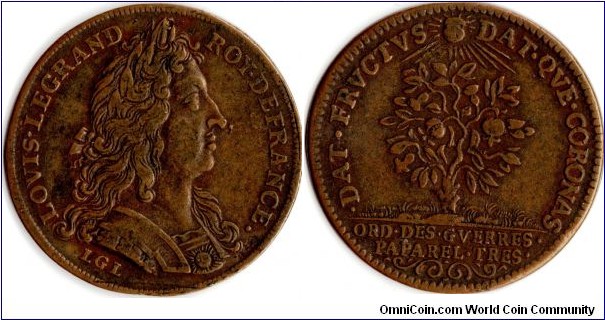
signed LGL
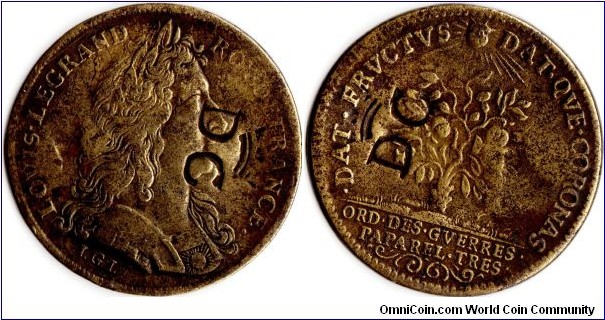
signed LGL, but more interestingly counterstamped with a Crown over `DG'. Ironically, this means that this otherwise `illegal' jeton has been subsequently legitimised via the counterstamp which indicates that it was sanctioned for use as legal tender in Guadeloupe.
Now the French minted ones.
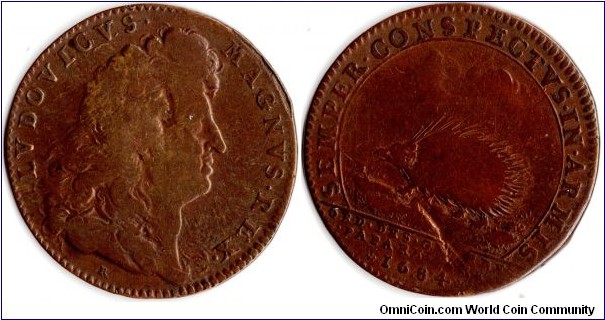
signed `R', this one was minted for the `Tresoriers Militaires des Armees' and cites Paparel in the exergue, dated 1684.
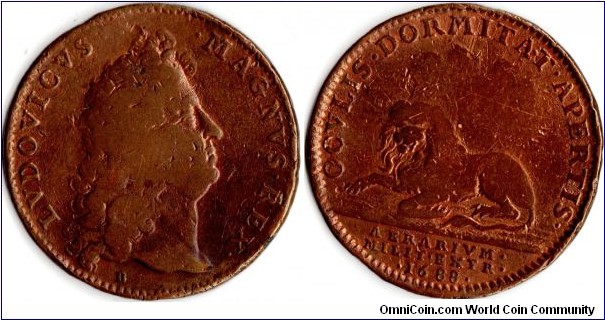
again, signed `R', this one was struck for the `Tresoriers de L'Extraordinaires des Guerres'. Although it does not cite Paparel, he was THE Treasurer of this particular administration at that time.
The `Dat fructus....' jetons are without doubt all (without exception) German in origin. the french made ones are as per the above. The French ones were also struck in silver.
The note provided by Feuardent indicate that there were only a few french made jetons issued during his time in office. There were a considerable number of employees under Paparel's charge and as a consequence large numbers of jetons were required. The enticement to commit fraud by buying German tokens on the cheap (but still charging the Treasury full whack) was too much temptation for Paparel, and his administration was flooded by these somewhat illegal imports. In terms of `value' the German made jetons are generally perceived to be `banal'......but on the other hand it makes the french made ones all the scarcer.
There are seven documented Nurenberg `Dat fructus' types, and so far between us we have been able to come up with four of them. Not bad for amateurs !

'
-
The only 2 candidates I could find for C.L. are;
C.L. Conrad Laufer, Counter-manufacturer at Nuremberg, 1637-1688.(My choice for now, unless you have a better candidate) & C.L. Caspar Longerich, Mint-master at Treves, 1683-1693.
Your one is definitely by Conrad Laufer of Nuremberg fame. As Feuardent notes (roughly)`there were some French made jetons in service'. I'll dig out the examples I have and check to see if any are French in origin. I'm sure I have a couple that are not typical Nuremberg types. I'll get back asap.
-
Excellent sleuthing / research work as always....and a nice quality jeton !
This design was issued over a number of years. I need to have a look at the various ones i have as my memory has it that some of these were minted at La Medaille. My memory could be (and probably is) wrong though.
-
Curious and interesting! Have you tried viewing it obliquely, as suggested by Geraldine Chimirri-Russell? Does the "obverse" in particular become anything else?
Not in this particular example Michael. No matter which `perspective' viewed from, there's no readily apparent portrait.....or anything else that is immediately discernable

Ian
-
a silver drachm `a la tete cubiste' (circa 100 bc) of the Volques Tectosages, a celtic tribe inhabiting the Toulouse region of France.
Not a brilliant example, but it is in both an affordable and nice collectable condition.
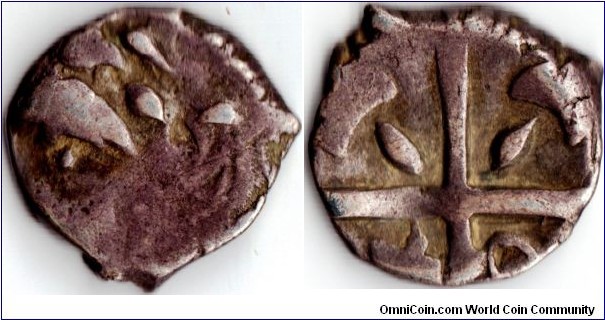
-
Another Lloyd assurance syndicate jeton de presence. This time `Lloyd Rouennais', based (as the name suggests) at Rouen and covering maritime risks.
Strange thing is that this is a pretty scarce item and I managed to buy it on ebay for next to nothing. I think that might be due to the fact that it looks very similar (at a cursory glance that is) to other seated mercury type jetons. In any event I struck lucky, although I was having kittens due to the length of time it took to arrive via `La Poste'. Normally a package from France is with me in 2 -3 days but this one for some reason known only to the postal services, took three weeks. I was very relieved when it arrived yesterday.
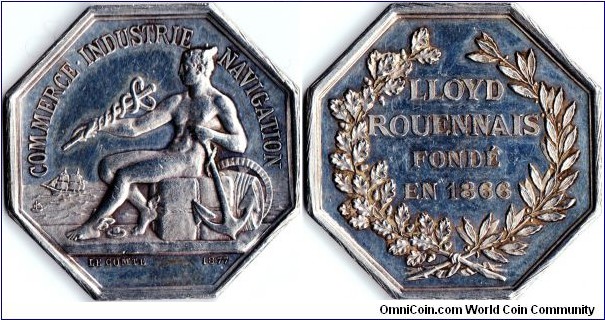
-
I've been very fortunate these past few months with my purchases and have managed to obtain quite a few relatively scarce and even rare items. I've managed to find some time to scan most of them and put them up on omnicoin just in case anyone is interested. The one below is a silver jeton de presence minted for Lloyd Francais (Paris) an assurance syndicate which covered maritime risks.
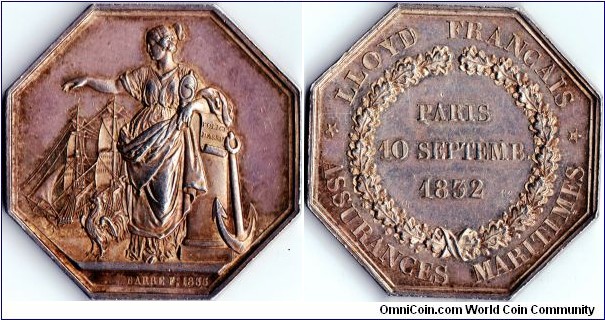
-
ok, it took me a wee bit of time, but i finally manage to acquire an example of a Louis XV jeton minted for the `master masons'.
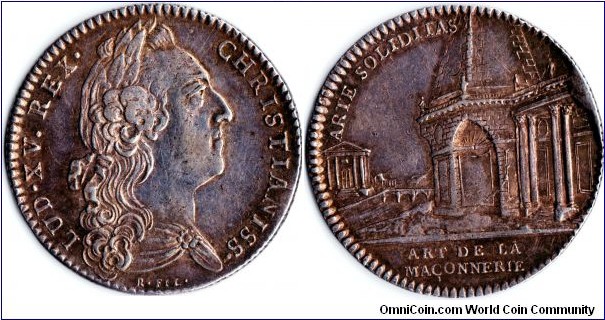
-
found another Peronne jeton dated 1656 but different reverse design, and in copper. Looks like the King and his army are out UFO hunting........
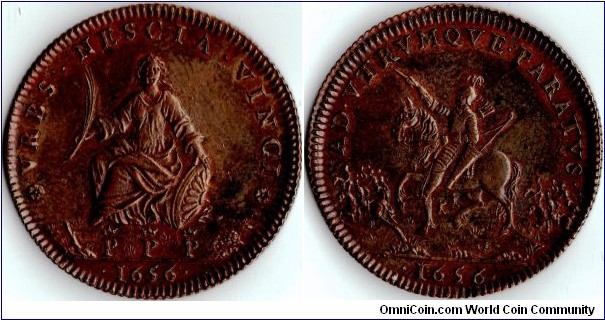
-
Still a nice addition. You must be very happy with it. The wear attests to the history. No telling what this coin saw in its day.
This was a chance purchase on my part. Was browsing a Belgian auction catalogue last month and decided to venture the minimum bid........Well, in short I was more than delighted to pay the bill.
-
From collecting experience, Syracusian coins are the epitome of beauty in ancients, but they are exponentially priced as you note. I myself have ventured into only one silver coin, and an 8 Litrai at that. Bronze is very very attractive, and much more attainable for collectors. It is rather like bronze is a bit overlooked, not that I mind though.
what you say about bronze is soooo true. the problem is getting specimens that are more than just examples of the many and various different colours of verdigris. I've seen some very decent bronzes of Hieron and other later Syracusan leaders but they too come with a price to match. The `balance' of affordability is all relative to the size of your pocketbook, no matter the type of metal. Personally I'd be too tempted to 'curate' a not too perfect bronze, so I tend to stick clear of buying ancient bronzes that are within my price range
 .
. -
Very nice Ian, happy new year.
The date is circa 476BC, I know it is just a typo.
Obv. slow quadriga, horses crowned by Nike
Rev. head Arethusa, 4 dolphins
Thanks for that. I've corrected the typo. still waiting here for the new year to arrive with us, but I take this opportunity to wish you and all of our fellow numismates avery good one when it comes.
-
In the real world, this coin is not exactly `museum quality', however, its likely to be the only one I will ever be able to afford and otherwise have the priviledge of owning...besides, there isn't another one in this `virtual' museum....yet.

circa 476bc struck during the reign of Hieron I, tyrant of Syracuse
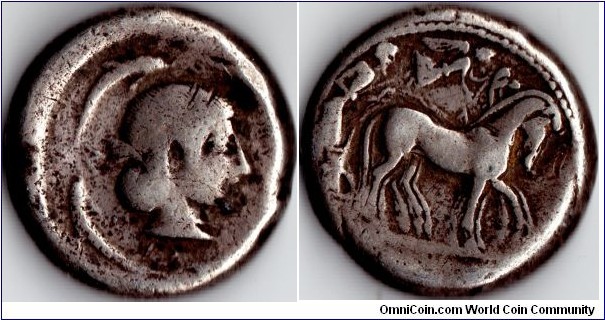
-
We're still waiting on a 1556 I believe.
No we're not. I posted a 1556 of King Philip of Spain in sequence some time ago.....please look back a little.
-
A group of medals from the Zuchwil fest (Solothurn)in 1926.
The small type has (sadly) been made into a badge.
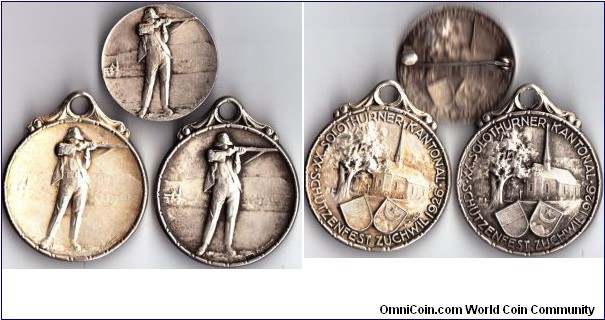
-
at last....here's a 1555 silver `madonna and child' denar from Hungary. Let's get moving again

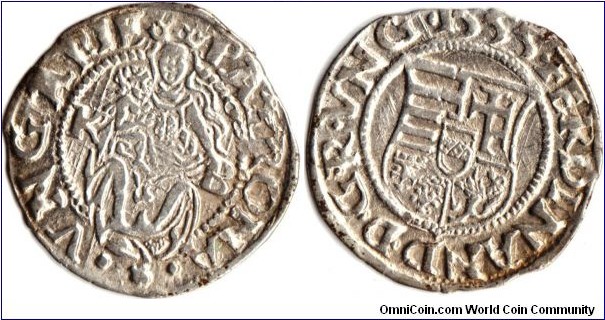
-
I'm waiting on two different 1555 coins arriving with me. I'll scan and post when they arrive.
Ian
-
i just knew you'd be unable to hold out.
It's the start of the slippery slope........

-
1556 -- we can't stop here!
I do have a 1/4 ducat of Phillip II of Spain from 1556, minted for Flanders

-
A very nice medal indeed. The three dimensional obverse reminds me of a lengthy series of French medals generated between 1810 and 1835 by different french engravers and which depicted famous frenchmen throughout the ages (`Galerie Métallique des Grands Hommes Français'). There are a few real humdingers in that series that would grace any collection, and I suspect you might want to keep your eyes peeled for the occasional real bargain find......... sometimes for less than 10 dollars.
-
Just bought another Angers city view jeton, this one dated 1655 and issued for M'sieur Gohin, Mayor of Angers and Knight of the realm. A different (and more detailed) perspective than the last.
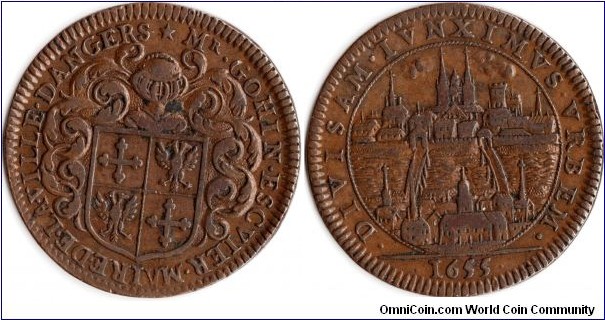
-
.....in relation to shooting medals, I would assert there are none finer than the Swiss ones. happy to be proven wrong.

Ian
-
love em all!!
excellent examples which demonstrate why Swiss shooting medals are a breed apart from anything produced by the rest of the world


Aeolis
in Ancient Coin Museum
Posted
I think the system in play currently ranges from `common as muck' all the way through the various shades of grey to `scarcer than hen's teeth'.
Seriously though, I haven't much of a clue when it comes to `relative scarcity' vs `value' other than that the two are definitely not synonymous with each other.
I think in respect of ancient greek coins, the aesthetic values tend to be the key driver. In terms of Roman coins, the coinage of some Emperors are few and far between, which means that people trying to get a `set' together of all the Roman Emperors is going to be in alongside some hefty competition for what I consider to be relatively duff looking coins.
There is no accounting forcollecting tastes (mine included!)........ My bad?
My bad?
Ian